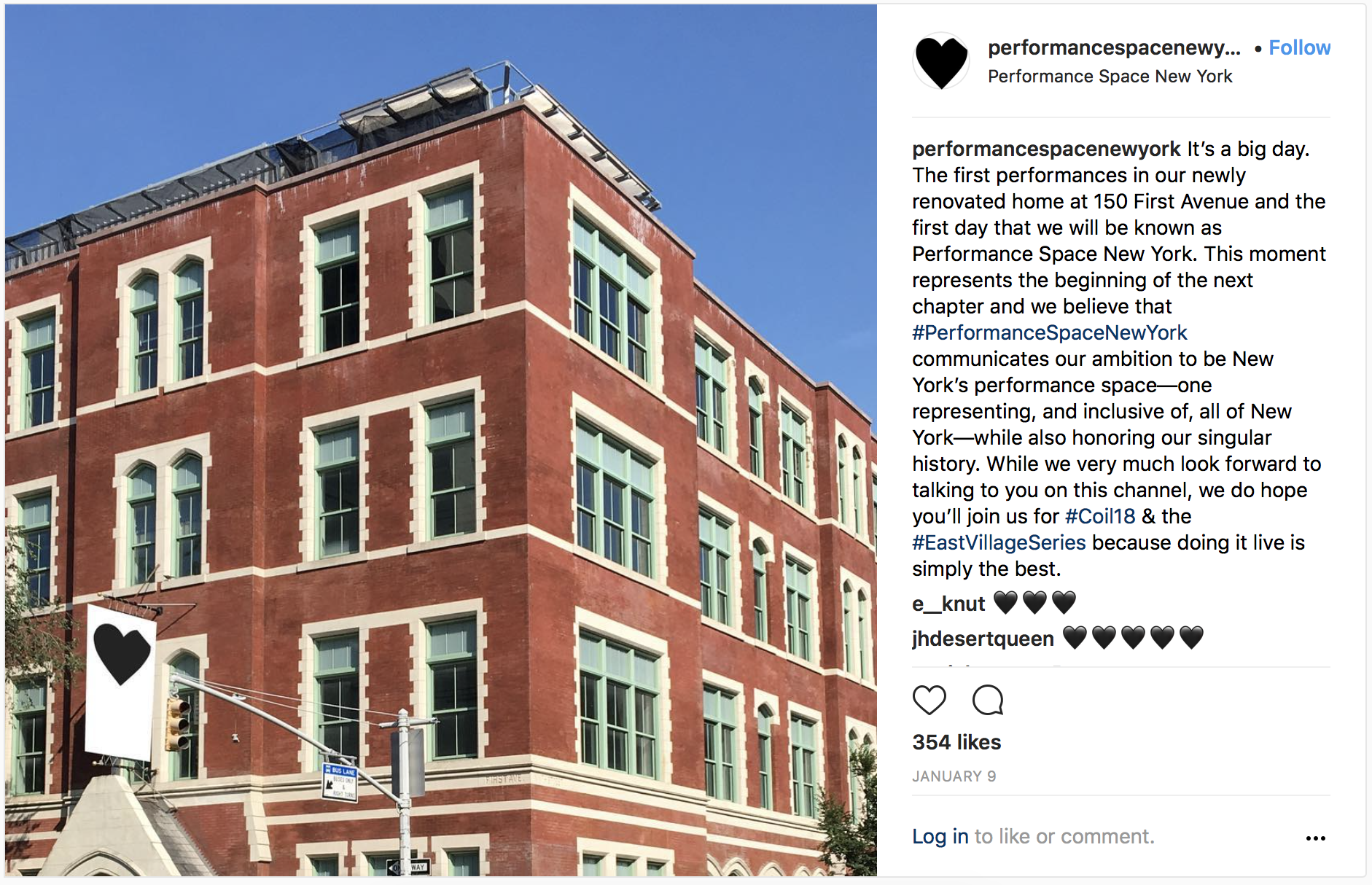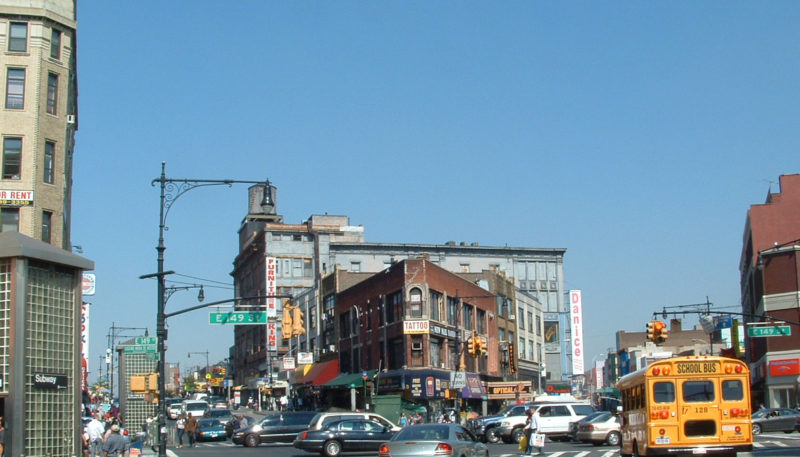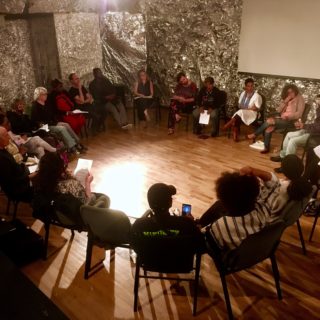Benedict Nguyen
A semi-concrete abstract:
I try to write about a lot of things: gentrification and space, the power and capacity to choose where to be (in dance and in the world), reparations and who’s owed what, and how to reorganize institutions and non-profit boards, workers cooperatives, and more. In Part I, I start by throwing myself under the bus to connect the evolving gentrification in the South Bronx and dialogues on equity and changing institutions in dance. In Part II, I try to imagine some specific-ish solutions to these questions to reconsider institutional structures more democratically. There are specific examples and ideas and some pop culture references and more. Thanks for reading this super-maximalist thought experiment.
Part I: Transforming space - Gentrifying the South Bronx and redistribution in NYC dance
I gotta say before I get into it that I’m a hypocrite. That if I’m saying individuals could do better, I also remember that the system is shattered, and people are just trying to clean up the mess as it keeps crumbling. But also, certain people in power could do much better. Gentrifiers could do better. Maybe by not doing what we did in the first place. Arts institutions could do better. Maybe by not being so institution-y. (More later). I think it’s easier said than done to give back the power that someone’s accumulated—in spite of obstacles, maybe, but definitely thanks to circumstance. Because to remove the glamor of having arrived (as an artist, maybe in a big city) is to recognize history charging through every space in New York City that people think they can just take up innocently. To remove the glamor of exposed brick walls and exclusive performance gigs is to understand that our art may not be enough to justify us being here. It really isn’t. What specific actions can we/I take to give it up?
(Here’s an elaboration of one of my dilemmas): I’m a gentrifier. I live in NYC (South Bronx, specifically) but I didn’t grow up here. I moved here reluctantly (really) after graduating from college to pursue the Dream of Being an Artist. Sort of. I live in a predominantly low-income, Latinx and Black neighborhood that’s feeling the relentless creep of gentrification reaching up from Mott Haven. (And beyond). I have no familial ties to my neighborhood. Being of color or queer or marginalized in some way isn’t enough to be entitled to this place.
Of course, being “from here,” doesn’t earn everyone a free pass either. In a recent Village Voice feature “South Bronx Saviors or Sellouts?” DJ Cashmere spoke to Bronx natives, entrepreneurs, and activists who grappled with what it means to be a part of the neighborhood their enterprises are complicit in transforming. Sulma Arzu-Brown, co-owner of the Boogie Down Grind Café in Hunts Point, said, “gentrification is coming. The goal is to get some of our community members to get a piece of the pie. To hold some stake in something that they sacrificed for. It’s only fair, it’s only right.” Even if some people get some pieces of the pie, still more get shut out or kicked out completely. Is there more than this fatalist view?
Because let’s be real, the real winner is developer Keith Rubinstein of Somerset Partners (and that horrific “Bronx is Burning” party in 2015). Real talk: I’ve been a customer at one of his ventures, Filtered Coffee. I’ve also gone to events at organizations he supports: BronxArtSpace and the Bronx Museum. Who do these spaces benefit? Rubinstein suggests that Filtered has “no purpose other than providing great service, great food and great beverages.” I suggest that, like the presence of bodies on a stage, the small gestures people make every day, the fact of existing is never not loaded with meaning and history. A boutique coffee shop can't be removed from the dollars that installed it in Mott Haven, from the people whose dollars this enterprise is trying to entice to keep it going. Can we interrogate the meaning of these dollars, these buildings, these actions to try and think still more deeply about belonging in space?

The institutions now known as Performance Space New York and Gibney recently grappled with an evolving sense of identity as the spaces they took up and carved out for artists in NYC transformed and expanded. What does it say for Performance Space New York to respond to the deep history of P.S. 122 in the renovation of its space and rebranding of its name and image? What does it say for Gibney, who picked up the pieces of the bankrupt Dance New Amsterdam, to implement such a thorough menu of programming and services for dancers and artists in this city? How might an institution or an artist’s service organization give reparations to a history, a community, a field that has multiple ideas of what they need? Danspace Project’s programs “acknowledge that this work is situated on the Lenape Island of Manhahtaan (Mannahatta) in Lenapehoking, the Lenape homeland.” A physical sign outside of Abrons Art Center makes a similar acknowledgement. Is more possible?
(This is the part someone could call defensive): Had the US not done what it had to my ancestors’ home, my family wouldn’t have moved to the US after the war, spreading across states coast to coast. Had my parents not met in the middle, I wouldn’t have been born the person I am. When I remember all the difficulties we experienced just trying to get by, I also remember that my ancestors didn’t ask for their lineage to end up here. They begged no one for the chance to “adapt” their culture to the rushing tides they were dropped into. Did anyone ask for that coffee shop?
With the history of being bunted from place to place pumping in my blood, is there anywhere I can live and not take up space or encroach on another’s history that’s not mine? Those expectations that immigrants be grateful are more than a racist and xenophobic fear of the Other. They’re a menacing reminder of dripping with scarcity that whispers in our other ear: There’s no room—You’ll never be home here and you'll never get to go home again.
Someone could say to me: But you didn’t have to choose New York.
I didn’t but I did. I chose somewhere I felt my politics and queer ideas reflected, where my art could find a home, a community. New York isn’t the only such place in the US but at the time, it felt like the most accessible one to me. Now, I sometimes tell myself it feels like a more dangerous choice to leave—to invite more disruption into the neighborhood with another vacant spot. Could I also take on the challenge of forging yet a new place to try and call home?
This is about power and the possibility of making choice. I’m making choices with the information I’ve absorbed and am trying to ask how I, and institutions, can do better. There’s a history that gets erased under nicer-sounding words like “development” and “expansion.” But really, the traumas of gentrification and war/diaspora share roots in displacement via colonization.
So couldn’t I choose to leave? Slow the climb up the class ladder I’m supposed to care about and try and find somewhere I’m not encroaching on someone’s neighborhood or indigenous land? Somewhere someone like me could be somewhat safer looking the way I look and being the way I am? Does this place exist?
Couldn’t Rubinstein choose to spend his dollars differently? What if he just handed his extra dollars to the Bronx and asked its inhabitants what to do with them? Reparations! Fix that hole in the sidewalk that’s been there since Alexandra Maruri was a kid or help folks own their homes. (Not that private property is the Answer here.) Or, if he really couldn’t keep his ego out of it, he could maybe bring people from the community he’s so interested in and ask, “Hey! What do you think should we do with all these dollars?” What if he could view his dollars as something that the system gave him and not things that he earned on pulling up his bootstraps alone? I’m wandering into science fiction here but as Walidah Imarisha wrote for Bitch Media, science fiction “offers social justice movements a process to explore creating those new worlds.” So if this feels absurd, maybe that’s a good thing.
Zooming back over to the dance world: While the non-profit industrial complex bleeds from the knife of its self-perpetuated scarcity narrative, there are deeper issues of shared community and recognition and space that I’ll talk about first. ICYMI, dance has an Equity Problem. The conversations about this have been happening and happening. A publication from “Configurations in Motion: Performance Curation and Communities of Color” (hosted by SLIPPAGE: Performance|Culture|Technology at Duke University in June 2015) offers particularly useful insight into these conversations. In it, the participants—largely artists, curators, scholars, and administrators of color—reflect on curatorial practices and institutional possibility for centering artists of color.
Paloma McGregor and Aaron Greenwald, among others, discuss the tensions of bringing black artists into traditionally white spaces. McGregor states, “No one event can hold all of us, and the ways in which our work shifts over time and does so in relationship to cultural shifts. I wanted to create ongoing opportunities for us to gather—not just to perform but to build community, across practice, and particularly among artists interested in pushing the form.”
Ishmael Houston-Jones and Rasu Jilani in particular consider how to expand audiences in a time when Netflix is easier to access than live performance. Marýa Wethers and Levi Gonzalez reflect on navigating institutional structures and imagine ways to make more room at the table. With a couple decades of experience as an arts advocate in NYC, Wethers remarks: “It seems to me that the field talks about diversity of programming but rarely about the reflection of those principles within their own organizations. I see this as a real problem, especially in the funding and presenting sectors, which only further increases the skewed power dynamics inherent in those relationships.”
From the texts from SLIPPAGE to the much publicized and written about debate between Cornel West and Ta-Nehisi Coates on reparations, a clear link emerges that holds a certain anxiety about relevance, about limited space, and about how, if you’re doing something radical (as a thinker or artist in general, and especially as a member of an underrepresented group), the powers that be don’t offer much room for you to exist and matter to them at the same time. Do we care about their valuation of us or the space they offer us?
The complexity of West and Coates’ back-and-forth speaks to how the mainstreaming of the Reparations Debate has allowed it to develop a deeper complexity that we need. These aren’t new conversations in society at large or in the arts. The SLIPPAGE texts in particular offer a reminder of how far we have to come. What could equity, reparations, and dance look like in the now and in the future?
Some action items for institutions I’ve thought about in navigating these questions IRL:
- Curate more historically underrepresented artists. Check. Ish.
- Connect audiences to the art that they’re about to see. Work in progress.
- Relinquish power: Quit jobs. Maybe don’t even apply in the first place. Huh?
Quit the power that allows to you choose which, how much, when, who, and where. But then, where would you go? At Abrons Art Center, Gibney, and NYU Skirball Center, Craig Peterson, Ben Pryor, and Jay Wegman appear to have played musical chairs with their jobs in 2016-17. How exciting! At the time of his hiring, Peterson stated, “It would be great if some new voices popped into some of these institutions, some non-white-male voices, frankly. It’ll be interesting to see what the Joyce and BAM and other major institutions do.” He did hire Ali Rosa-Salas as Director of Performance Programs for Abrons but still, he accepted his new job.
We now have an answer to Peterson’s question: the Joyce chose Aaron Mattocks, someone from “deep in the dance world” but still, a white male. BAM chose David Binder, following in a pattern of external hires that, as Conrad W. Chavez for the Clyde Fitch Report suggests, have stifled growth from within. He also noted that at Lincoln Center, veteran artistic director of 25 years Jane Moss will lose her summer festival but gain control of all other programing, a change The New York Times responded to with awe.
I could continue the snark but really, the structuring of jobs and the economy isn’t fit to make room for people like Peterson (or anyone who’s put a lot of work in the field) to make an easy step sideways for someone else. In the myth of meritocracy, once you’ve put in your time, how can someone do anything but continue climbing up the ladder of power?
Artists are creative so let’s try and imagine. I’m not giving anyone an easy out.


